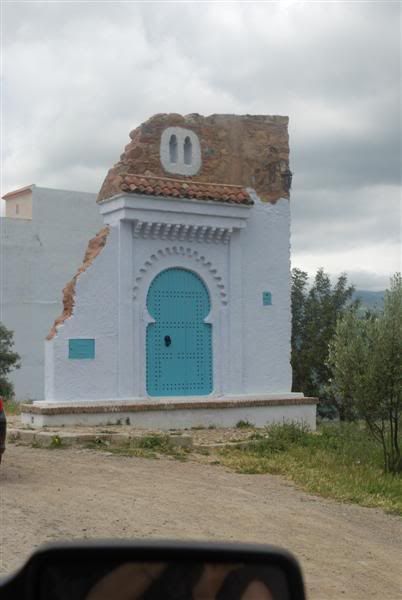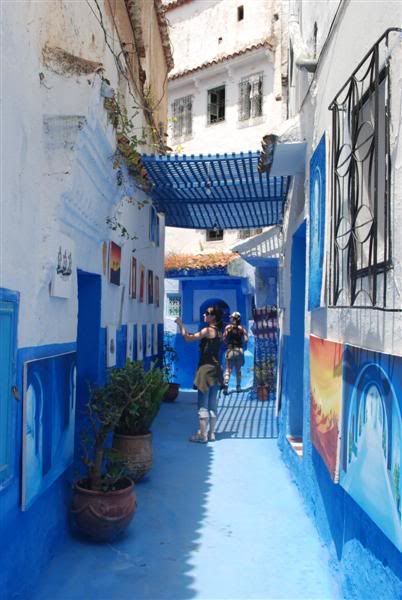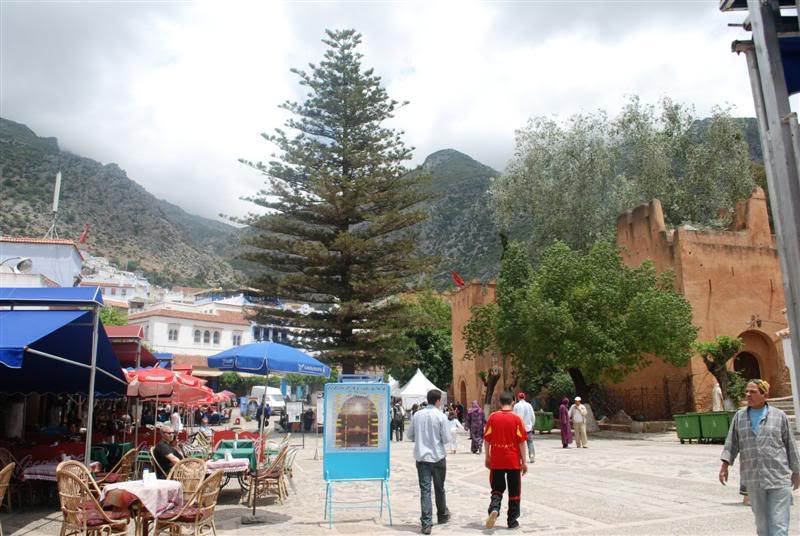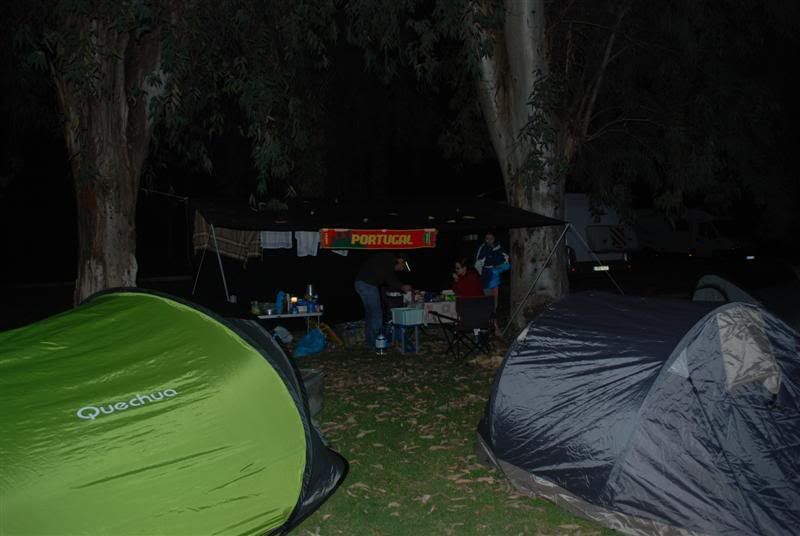Realsweden
New member
Hello everyone!
I'm Marco, 33 from Portugal. I'm the proud owner of a Range Rover Classic 300Tdi which has chosen me almost 6 years ago. It has taken me through a lot of offroad adventures over the years, never letting me down.
This will be the photo report of my first ever trip to Morocco. I hope you like it, and I'm sorry if my english is not "understandable". Feel free to correct me anytime.
It all started in 2008, during lunch, in a restaurant. Since Portugal is not that far away from Morocco, lots of portuguese offroaders travel to Morocco, mostly because of the sand challenge, and it's a common theme of conversation. While we were talking, I chalenged two of my friends to an expedition to Morocco, a year from then. Fortunately, it didn't take to much to convince them and the challenge was accepted right away
I have to say that I had mixed feelings. I had never felt the Morocco attraction. People usually love it or hate it. Then there's a very small group of people who says:"Ah, it's ok. Been there, it's done." I thought I'd fit in this category. My mindset was sort of "Let's see what that's about".
One of our first discussions was: “How are we going?” Some companies and individuals organize trips to Morocco on a regular basis. These trips usually include a number of nights at 3-4 star hotels, mechanical support, guides, etc. The downside is the price. At the time, some trips were priced at €800+ per person, with fuel expenses not included.
Though it would be good to have some kind of support, we were interested in doing something considerably cheaper. Hence, our first big decision: “We're going by ourselves”.
So, the next year was spent studying maps, lots of hours at Google Earth, Wikiloc, etc. But our main help came from a friend from Portugal who had been in Morocco twice before. He provided us with the tracks from his previous trips and we chose our route.
We wanted to do some offroad tracks, try out our vehicles in the sand but, at the same time, visit some of the great cities of Morocco and learn something about it's culture.
We really didn't know what we would find, so we filled our cars with enough food for the 12 days and, exactly a year after that lunch, a Land Rover Discovery 300Tdi, a Land Rover Discovery Td5 and my Range Rover got together at a gas station in Porto, Portugal where we officially started Marrocos 2009, at 6am:

The first stage would take us across Portugal and Spain as we made our way to Algeciras where a Ferry would take us to Ceuta.
At 11am, we crossed the Portugal-Spain border:

After a very long day (800+ km), we had a night's rest in a hotel across the Algeciras Harbour. Through the window, we could see where we would board the ferry, the next day:

Day 2 Algeciras – Ceuta – Chefchaouen
It was a beautifull morning at Algeciras:

The morale was high as we boarded the 11' clock ferry towards Ceuta:


The big moment was near:

Before leaving Spanish territory, we exchanged Euros for Dirhams, just before the border crossing. There are a bunch of Moroccans on the side of the road, we asked for a quotation, they did the conversion using a calculator, we gave them euros, they gave us Dirhams. No problems there, even with the police watching.
Crossing the border to Morocco in Ceuta can be a stressing experience. As you leave the spanish side, you reach a big parking space and even before you park, there are lots of moroccans coming your way. They call themselves travel agents and their purpose is to aid you through the border burocracy. We tried to ignore them, but it was almost impossible, and being our fist time, we kind of let them show us what to do, but allways trying to look like we were in control. One of them picked up our passports and for a while we were worried about them, although we never lost sight of them.
After an inspection by a border office, we headed to a booth where our passports were stamped and our data was added to the database. We had 5 euros inside each passport and the border office gladly took them away, and didn't ask us anything.
Then we headed for another booth, where we are supposed to register our cars. We show them the green document of the insurance, the border papers were stamped and once again, our data was collected in the computer.
With all the paperwork sorted, we headed back to our cars, gave 5-10 euros to the “travel agent” and made our way to the vehicle inspection.
Inspection was quite fast. The officer ordered us to open our cars, but when we looked to all the stuff loaded in the back e just asked us if we had any guns with us (which we didn't). Another signature on the papers, and off we were.
The entire process took us about 20-30 minutes. Fortunately, there wasn't much movement at the time we crossed.
And there we were. Morocco! Everyone was going crazy on the radio. BTW, it is better to hide all CB antenas and radios before crossing the border. I've heard stories about radios and antenas that were confiscated at the border and returned at the exit. We did exactly that and had no problems. We put everything back in its place right after crossing and it was ok until the end of the trip.4
I was using a borrowed Garmin 276c for navigation, and I was quite happy that the track was working fine as we were advancing. I didn't had the oportunity to really test it in the ground so I was a bit worried if it would work ok or not.
Fortunately, it was working like a charm. My backup was a PDA running CompeGPS and some calibated Moroccan maps.
The track took us to Tetouan, where a very kind local told us (we were driving down an avenue and we was riding his motorcycle alongside us) that we were very lucky to be there today, because there was a traditional market going on and it was an opportunity we shouldn't miss.
I asked the other cars via radio and everyone thought it was a good idea. So we followed Coca-Cola (that was his name, he would explain later). He took us through some back roads and we parked our cars just outside the Tetouan Medina.
We took a short walk around the Medina:

As it was almost lunch time, Coca-Cola took us to a restaurant, where we experienced Moroccan food for the first time:

Let me say that I fell instantly in love with the food. It is sooooooo good. I imediatly regreted filing up my car with enough food for the entire expedition.
Coca-Cola then explained us why he used that name. He said: “Everyone in Tetouan knows me. And there's only one thing here that is as known as me, and that's Coca-Cola. So everyone calls me Coca -Cola.”
He was turning out to be a very sympathetic guy. After a few minutes he was showing photos of his wife and children 
He took us to an herbalist. One of the best experiences of the entire trip. Sahid was the owner and he gave us a long and humoristic speech showing all the herbs he had, explaining what were they used for. We had a really good time there:

Then we wandered through the Medina for some time:

And then, Coca-Cola took us to the inevitable tapestry show. Before we knew it, there was a man displaying us all sorts of rugs and mats:

We told him we didn't want to buy anything, but he kept on bringing more and more mats. In the end we ended up buying a towel (it pays to insist, he must have thought).
We still had a few km to do that day, so we left Coca-Cola and Tetouan and headed to Chefchaouen. We were a bit suprised at the level of Morocan roads. We were expecting things to be a lot worst than they were. Until then, almost every road was paved and in not so bad conditions. After running paralel with the mediterranean for a while, we turned south into the mountains and made stopping only for photos:


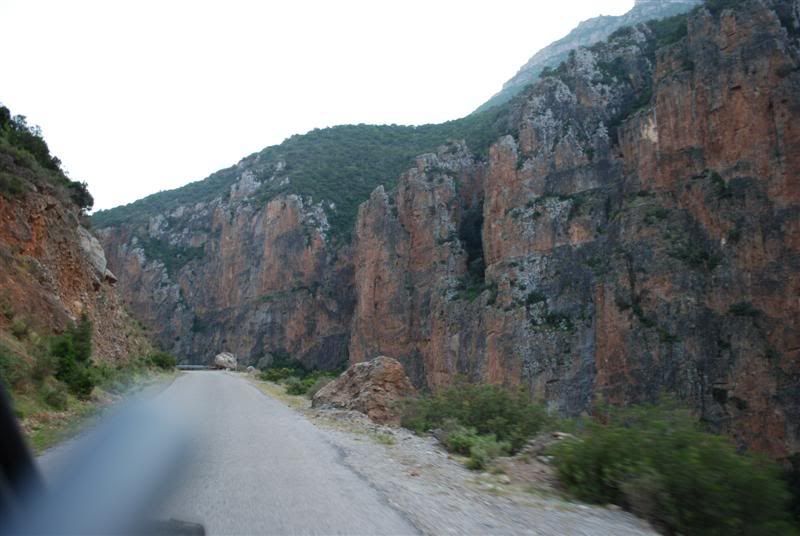
As we drove up the mountains, suddenly the radio goes “Marco, hang on. Miguel's having engine problems. It's not starting”.
So we stopped. In the day before, as we were driving down to Algeciras, Miguel noticed a strange noise coming from the alternator. The thing that is supposed to keep tension on the alternator belt was “jumping”. It looked like the spring had broken. At the time, he called the mechanic who said that is the problem was only the spring, there would be no real problem if he decided to carry on with the trip. So he did.
Back in the mountains, the car wouldn't start. We tried using battery cables and it wouldn't start. We exchanged batteries with my Range Rover and had the same result. Since we were uphill, we towed the car back in the road, and tried to start the engine after letting the car roll a bit down hill. And the engine started! We were all happy, but then, a huge cloud of smoke came out of the engine bay and Miguel had to kill the engine again.

There was nothing we could really do and it looked like our adventure was over before even starting. It was getting dark, and as we started taking the tents out of the cars, we saw a man coming down from an Auberge that was located 100 metres from the place we were. Our initial reaction was “Oh no, not another Coca-Cola”... As he reached us, he greeted us in Portuguese! We were in shock! A portuguese in the middle of the Riff mountains? It couldn't be true. But it was.
Daniel is the owner of Auberge Caiat (http://www.caiat.com), in the Riff Mountains. So he invited us to spend the night at his Auberge. We gladly accepted his invitation and one hour later we were preparing dinner in the confort of the Auberge.
Daniel explained us that it would be hard for the local mechanics to repair the car. Their first approach is to strip cars down, and when they put it back together, they end up with leftover pieces in their hands. Our best option would be to have the car towed back to the border and repaired in Ceuta. The next morning we were going to call Miguel's insurance company in Portugal so that we could get the tow track and head back to Ceuta.
(to be continued )
)
I'm Marco, 33 from Portugal. I'm the proud owner of a Range Rover Classic 300Tdi which has chosen me almost 6 years ago. It has taken me through a lot of offroad adventures over the years, never letting me down.
This will be the photo report of my first ever trip to Morocco. I hope you like it, and I'm sorry if my english is not "understandable". Feel free to correct me anytime.
It all started in 2008, during lunch, in a restaurant. Since Portugal is not that far away from Morocco, lots of portuguese offroaders travel to Morocco, mostly because of the sand challenge, and it's a common theme of conversation. While we were talking, I chalenged two of my friends to an expedition to Morocco, a year from then. Fortunately, it didn't take to much to convince them and the challenge was accepted right away
I have to say that I had mixed feelings. I had never felt the Morocco attraction. People usually love it or hate it. Then there's a very small group of people who says:"Ah, it's ok. Been there, it's done." I thought I'd fit in this category. My mindset was sort of "Let's see what that's about".
One of our first discussions was: “How are we going?” Some companies and individuals organize trips to Morocco on a regular basis. These trips usually include a number of nights at 3-4 star hotels, mechanical support, guides, etc. The downside is the price. At the time, some trips were priced at €800+ per person, with fuel expenses not included.
Though it would be good to have some kind of support, we were interested in doing something considerably cheaper. Hence, our first big decision: “We're going by ourselves”.
So, the next year was spent studying maps, lots of hours at Google Earth, Wikiloc, etc. But our main help came from a friend from Portugal who had been in Morocco twice before. He provided us with the tracks from his previous trips and we chose our route.
We wanted to do some offroad tracks, try out our vehicles in the sand but, at the same time, visit some of the great cities of Morocco and learn something about it's culture.
We really didn't know what we would find, so we filled our cars with enough food for the 12 days and, exactly a year after that lunch, a Land Rover Discovery 300Tdi, a Land Rover Discovery Td5 and my Range Rover got together at a gas station in Porto, Portugal where we officially started Marrocos 2009, at 6am:

The first stage would take us across Portugal and Spain as we made our way to Algeciras where a Ferry would take us to Ceuta.
At 11am, we crossed the Portugal-Spain border:

After a very long day (800+ km), we had a night's rest in a hotel across the Algeciras Harbour. Through the window, we could see where we would board the ferry, the next day:

Day 2 Algeciras – Ceuta – Chefchaouen
It was a beautifull morning at Algeciras:

The morale was high as we boarded the 11' clock ferry towards Ceuta:


The big moment was near:

Before leaving Spanish territory, we exchanged Euros for Dirhams, just before the border crossing. There are a bunch of Moroccans on the side of the road, we asked for a quotation, they did the conversion using a calculator, we gave them euros, they gave us Dirhams. No problems there, even with the police watching.
Crossing the border to Morocco in Ceuta can be a stressing experience. As you leave the spanish side, you reach a big parking space and even before you park, there are lots of moroccans coming your way. They call themselves travel agents and their purpose is to aid you through the border burocracy. We tried to ignore them, but it was almost impossible, and being our fist time, we kind of let them show us what to do, but allways trying to look like we were in control. One of them picked up our passports and for a while we were worried about them, although we never lost sight of them.
After an inspection by a border office, we headed to a booth where our passports were stamped and our data was added to the database. We had 5 euros inside each passport and the border office gladly took them away, and didn't ask us anything.
Then we headed for another booth, where we are supposed to register our cars. We show them the green document of the insurance, the border papers were stamped and once again, our data was collected in the computer.
With all the paperwork sorted, we headed back to our cars, gave 5-10 euros to the “travel agent” and made our way to the vehicle inspection.
Inspection was quite fast. The officer ordered us to open our cars, but when we looked to all the stuff loaded in the back e just asked us if we had any guns with us (which we didn't). Another signature on the papers, and off we were.
The entire process took us about 20-30 minutes. Fortunately, there wasn't much movement at the time we crossed.
And there we were. Morocco! Everyone was going crazy on the radio. BTW, it is better to hide all CB antenas and radios before crossing the border. I've heard stories about radios and antenas that were confiscated at the border and returned at the exit. We did exactly that and had no problems. We put everything back in its place right after crossing and it was ok until the end of the trip.4
I was using a borrowed Garmin 276c for navigation, and I was quite happy that the track was working fine as we were advancing. I didn't had the oportunity to really test it in the ground so I was a bit worried if it would work ok or not.
Fortunately, it was working like a charm. My backup was a PDA running CompeGPS and some calibated Moroccan maps.
The track took us to Tetouan, where a very kind local told us (we were driving down an avenue and we was riding his motorcycle alongside us) that we were very lucky to be there today, because there was a traditional market going on and it was an opportunity we shouldn't miss.
I asked the other cars via radio and everyone thought it was a good idea. So we followed Coca-Cola (that was his name, he would explain later). He took us through some back roads and we parked our cars just outside the Tetouan Medina.
We took a short walk around the Medina:

As it was almost lunch time, Coca-Cola took us to a restaurant, where we experienced Moroccan food for the first time:

Let me say that I fell instantly in love with the food. It is sooooooo good. I imediatly regreted filing up my car with enough food for the entire expedition.
Coca-Cola then explained us why he used that name. He said: “Everyone in Tetouan knows me. And there's only one thing here that is as known as me, and that's Coca-Cola. So everyone calls me Coca -Cola.”
He was turning out to be a very sympathetic guy. After a few minutes he was showing photos of his wife and children 
He took us to an herbalist. One of the best experiences of the entire trip. Sahid was the owner and he gave us a long and humoristic speech showing all the herbs he had, explaining what were they used for. We had a really good time there:

Then we wandered through the Medina for some time:

And then, Coca-Cola took us to the inevitable tapestry show. Before we knew it, there was a man displaying us all sorts of rugs and mats:

We told him we didn't want to buy anything, but he kept on bringing more and more mats. In the end we ended up buying a towel (it pays to insist, he must have thought).
We still had a few km to do that day, so we left Coca-Cola and Tetouan and headed to Chefchaouen. We were a bit suprised at the level of Morocan roads. We were expecting things to be a lot worst than they were. Until then, almost every road was paved and in not so bad conditions. After running paralel with the mediterranean for a while, we turned south into the mountains and made stopping only for photos:



As we drove up the mountains, suddenly the radio goes “Marco, hang on. Miguel's having engine problems. It's not starting”.
So we stopped. In the day before, as we were driving down to Algeciras, Miguel noticed a strange noise coming from the alternator. The thing that is supposed to keep tension on the alternator belt was “jumping”. It looked like the spring had broken. At the time, he called the mechanic who said that is the problem was only the spring, there would be no real problem if he decided to carry on with the trip. So he did.
Back in the mountains, the car wouldn't start. We tried using battery cables and it wouldn't start. We exchanged batteries with my Range Rover and had the same result. Since we were uphill, we towed the car back in the road, and tried to start the engine after letting the car roll a bit down hill. And the engine started! We were all happy, but then, a huge cloud of smoke came out of the engine bay and Miguel had to kill the engine again.

There was nothing we could really do and it looked like our adventure was over before even starting. It was getting dark, and as we started taking the tents out of the cars, we saw a man coming down from an Auberge that was located 100 metres from the place we were. Our initial reaction was “Oh no, not another Coca-Cola”... As he reached us, he greeted us in Portuguese! We were in shock! A portuguese in the middle of the Riff mountains? It couldn't be true. But it was.
Daniel is the owner of Auberge Caiat (http://www.caiat.com), in the Riff Mountains. So he invited us to spend the night at his Auberge. We gladly accepted his invitation and one hour later we were preparing dinner in the confort of the Auberge.
Daniel explained us that it would be hard for the local mechanics to repair the car. Their first approach is to strip cars down, and when they put it back together, they end up with leftover pieces in their hands. Our best option would be to have the car towed back to the border and repaired in Ceuta. The next morning we were going to call Miguel's insurance company in Portugal so that we could get the tow track and head back to Ceuta.
(to be continued
Last edited:






